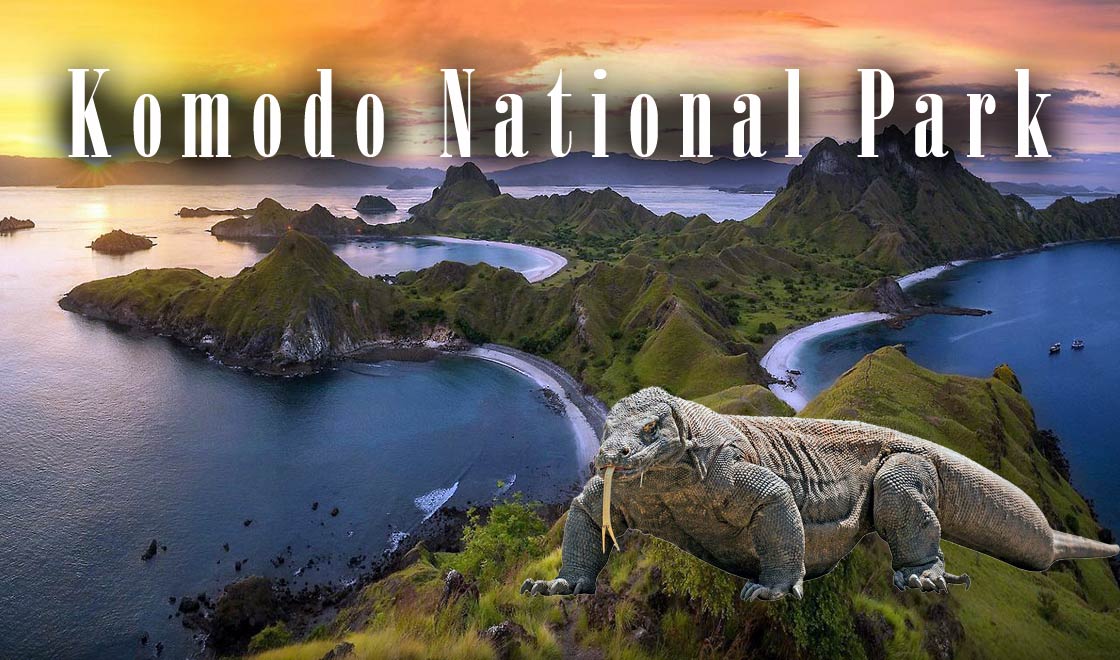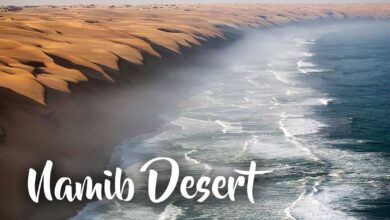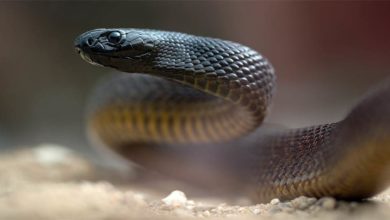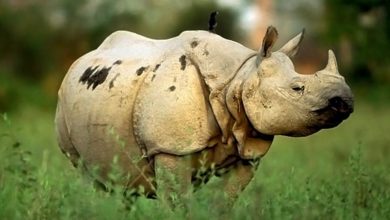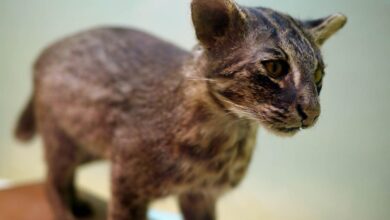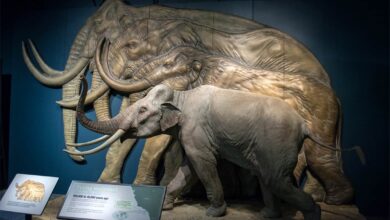Uncovering the Hidden Treasures of Komodo National Park
Nestled between the islands of Sumbawa and Flores in Indonesia lies a place of wonder and amazement. It is a place where ancient dragons roam free, where the marine biodiversity is unmatched, and where landscapes range from rolling hills to pristine beaches. It is a place that has been designated a UNESCO World Heritage Site and is revered by scientists, conservationists, and adventurers alike. This place is Komodo National Park, a living laboratory of natural wonders that has captured the imagination of people around the world.
Komodo National Park is a unique and diverse natural wonderland that offers a once-in-a-lifetime experience for visitors. Located in Indonesia, the park is home to the famous Komodo dragon, the largest lizard species in the world. This fascinating reptile can grow up to 3 meters (9.8 feet) in length and weigh up to 70 kilograms (154 pounds). But the park is not just about the dragons – it also boasts an incredible array of marine life, with over 1,000 species of fish and hundreds of species of coral identified in its coral reefs.

Visitors can explore the park’s diverse landscapes, which range from rolling hills to savannas and pristine beaches. The park is also home to several active volcanoes and is located on the rim of the Pacific Ring of Fire, a region famous for its geological activity. With its unique natural beauty and cultural heritage, Komodo National Park is a true natural wonder that captivates and inspires all who visit it.
Komodo National Park is a protected area in Indonesia that covers the three largest islands of Komodo, Padar, and Rinca and 26 smaller islands. It is located in the Lesser Sunda Islands and is known for its unique fauna, particularly the Komodo dragon, the largest living species of lizard. The park also offers scenic landscapes, including beaches, forests, hills, and savannas. It was established in 1980 and designated a UNESCO World Heritage Site in 1991.
Location
Komodo National Park is located in Indonesia and encompasses the islands of Komodo, Padar, and Rinca, as well as 26 smaller islands, in the Lesser Sunda Islands. It is situated between the islands of Sumbawa and Flores, in the Nusa Tenggara region of East Indonesia.
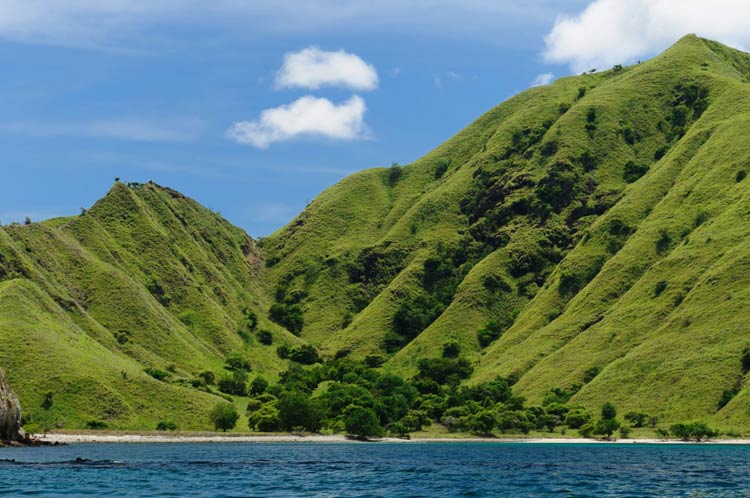
Basic Facts
- Location
Komodo National Park is located in the Nusa Tenggara region of Indonesia, between the islands of Sumbawa and Flores. - Size
The park covers an area of 1,817 square kilometers (702 square miles), including three larger islands (Komodo, Rinca, and Padar) and several smaller islands. - Biodiversity
Komodo National Park is home to over 5,000 species of flora and fauna, including the famous Komodo dragon, which is the largest species of lizard in the world. - Marine Life
The park’s marine environment is home to over 1,000 species of fish, 260 species of coral, and several species of marine mammals, including dolphins and whales. - Climate
The park has a tropical climate, with a wet season from December to March and a dry season from April to November. - Conservation
The park was established in 1980 to protect the Komodo dragon and its habitat, and was designated a UNESCO World Heritage Site in 1991. Conservation efforts in the park include habitat protection, marine conservation, community involvement, research and monitoring, and protection of the Komodo dragon. - Activities
Visitors to the park can enjoy a range of activities, including hiking, diving, snorkeling, and wildlife watching. The park also has several ranger stations, visitor centers, and eco-friendly accommodations for tourists.
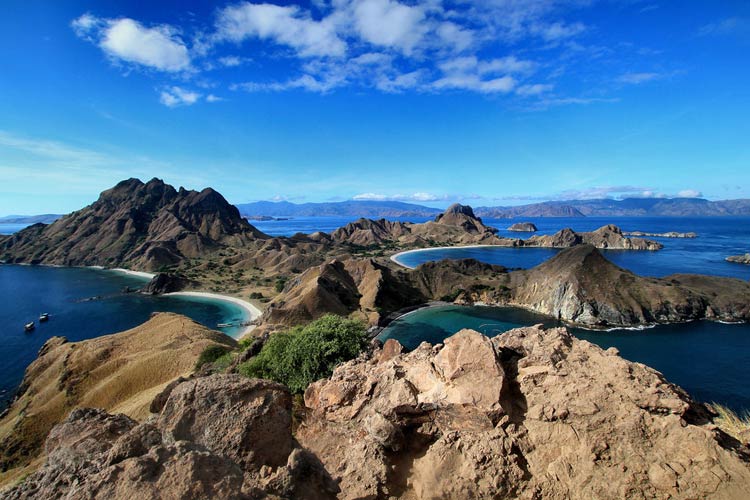
History and name of the Park
Komodo National Park was established in 1980 and named after the Komodo dragon, a species of monitor lizard that is native to the region and is its most famous inhabitant. The park was created to protect and conserve the unique biodiversity of the Lesser Sunda Islands, including the Komodo dragon, as well as the natural landscapes and cultural heritage of the area.
In 1991, it was designated a UNESCO World Heritage Site, recognizing its exceptional natural values and ecological importance. The park is also known for its stunning scenic beauty, which includes white sandy beaches, hills, savannas, and coral reefs.
Geography
Komodo National Park covers an area of 1,817 km² (702 mi²), including the three largest islands of Komodo, Padar, and Rinca, and 26 smaller islands in the Lesser Sunda Islands of Indonesia. The park features a range of diverse landscapes, including forests, hills, savannas, and beaches, as well as mangrove swamps, seagrass beds, and coral reefs in the surrounding waters.
The geography of the park also includes several active and inactive volcanic islands, which have shaped the unique geology of the region and created a rich and varied ecosystem. The highest point in the park is Mount Satalibo on the island of Padar, which rises to 735 meters.
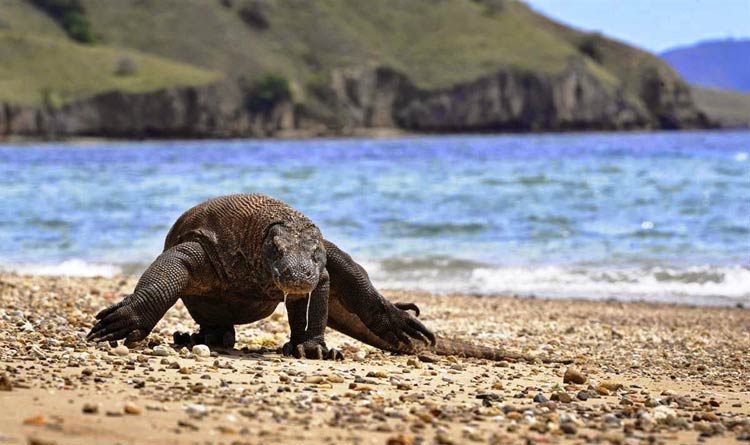
Geology
Komodo National Park is located in the Lesser Sunda Islands, which were formed by volcanic activity and are part of the Sunda Arc, a chain of volcanic islands that were created by the subduction of the Indian Plate beneath the Eurasian Plate. The park includes several active and inactive volcanic islands, which have created the unique geology of the region.
The islands are characterized by steep cliffs, rugged terrain, and rocky outcrops, with deep valleys, canyons, and gorges that were created by erosion over time. The geology of the park also includes sedimentary rock formations, such as limestone and sandstone, which were laid down in shallow marine environments and later uplifted and exposed by tectonic activity. This geology has created a variety of habitats that support a rich and diverse ecosystem, including forests, hills, savannas, and coral reefs.
Landscape of the park
Komodo National Park features a diverse and unique landscape that includes a range of habitats, including forests, hills, savannas, beaches, and coral reefs. The park is characterized by steep cliffs, rugged terrain, and rocky outcrops, with deep valleys, canyons, and gorges that were created by erosion over time. The islands are also home to several active and inactive volcanic cones, including Mount Satalibo on the island of Padar, which is the highest point in the park at 735 meters.
The forested areas of the park support a rich and varied flora, with stands of tropical hardwoods, including the ebony tree, and a wide range of other plant species. The park is also home to an abundance of wildlife, including deer, monkeys, wild boar, and several species of birds, as well as its most famous inhabitant, the Komodo dragon.
The park’s coastal and marine areas are also a highlight, with pristine white sand beaches and a rich and diverse coral reef system that is home to a wide variety of marine life, including turtles, dolphins, manta rays, and several species of sharks. The mangrove swamps and seagrass beds that surround the islands are also important habitats for a variety of wildlife, including dugongs and several species of sea birds.
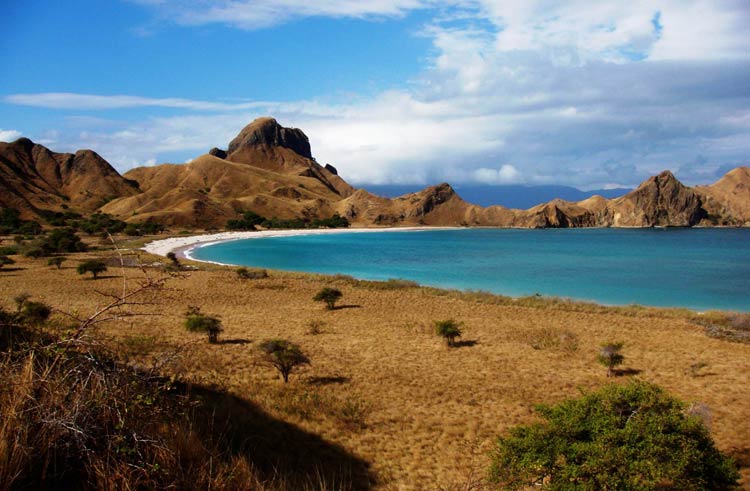
Climate
The climate of Komodo National Park is classified as tropical, with high temperatures and high humidity throughout the year. The park is located in a region that is influenced by monsoon winds, with a wet season that typically lasts from October to April, and a dry season that lasts from May to September. During the wet season, the park experiences heavy rainfall, while during the dry season, the weather is generally sunny and dry, with occasional wind and high waves.
The average temperature in the park ranges from 25°C to 35°C, with little variation throughout the year. The relative humidity is typically high, ranging from 70% to 90%. The park’s location in a region of high rainfall and high humidity creates a rich and diverse ecosystem, with abundant vegetation and wildlife. However, it can also make outdoor activities, such as hiking and exploring the park, challenging during the wet season, due to the high humidity and risk of rain.
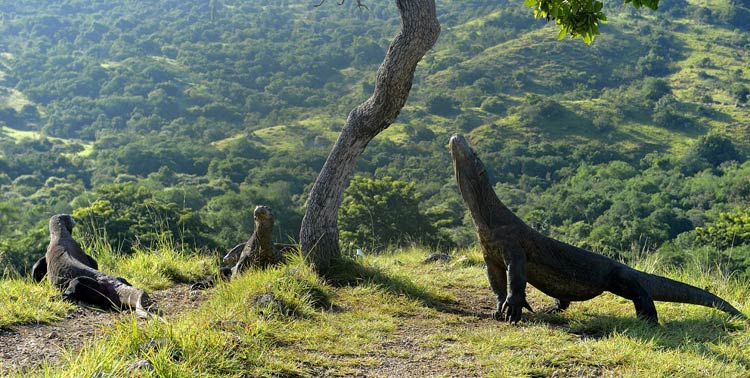
Human habitation
Komodo National Park is located in a remote part of Indonesia and has a limited human population. The main settlements in the park are the villages of Komodo and Kampung Bajo on the island of Flores, which serve as the main entry points for visitors to the park. The park is also home to several small fishing villages, including the traditional fishing village of Wae Rebo on the island of Flores, which is known for its unique circular-shaped houses that were built using traditional techniques and materials.
The park’s remote location and limited human population have helped to preserve its unique and unspoiled natural environment, which is home to a rich and diverse ecosystem, including its most famous inhabitant, the Komodo dragon. The park is also recognized for its cultural heritage, with a long history of human habitation in the region that dates back thousands of years, including the indigenous Bajo people who are known for their seafaring traditions and fishing practices.
Today, the park is managed by the Indonesian government and is a popular tourist destination, attracting visitors from around the world who come to see its natural beauty, rich wildlife, and cultural heritage. The park is also a critical area for conservation, with ongoing efforts to protect and preserve its unique ecosystem and cultural heritage for future generations.

Flora in Komodo National Park
Komodo National Park is home to a rich and diverse flora, with a wide range of plant species that are adapted to the park’s unique and varied habitats. The park’s forests are dominated by tropical hardwoods, including species of ebony and ironwood, as well as a variety of other tree species. The park’s hills and savannas are characterized by grasslands and scrublands, with a variety of herbaceous plants, including species of wildflowers and succulents.
The park’s coastal areas are also home to a variety of plant species, including mangroves, seagrasses, and other salt-tolerant plants. These areas support a rich and diverse ecosystem, including a variety of bird species and other wildlife.
In addition to its native plant species, the park is also home to a variety of introduced plant species, including species of tropical fruit trees, such as mangoes, bananas, and papayas, as well as coconut palms, which are widely cultivated in the region. These introduced species provide food and other resources for the park’s human residents and wildlife, and play an important role in the park’s ecosystem.
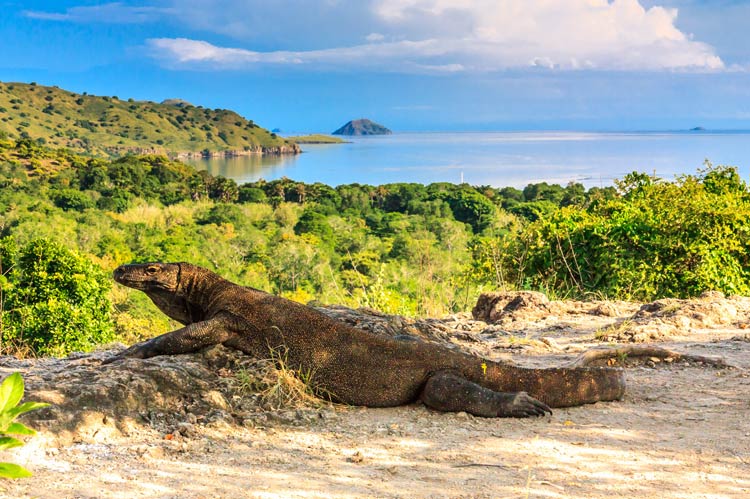
Fauna in Komodo National Park
Komodo National Park is home to a rich and diverse fauna, with a wide variety of wildlife species that are adapted to the park’s unique and varied habitats. The park is most famous for its flagship species, the Komodo dragon, which is the world’s largest lizard and a unique and fascinating creature that can grow up to 3 meters in length and weigh up to 140 kg.
In addition to the Komodo dragon, the park is home to a variety of other reptiles, including species of snakes and lizards, as well as a wide range of mammals, including deer, monkeys, and wild boar. The park’s forests, hills, and savannas are also home to a variety of bird species, including species of parrots, pigeons, and eagles.
The park’s coastal and marine areas are also a highlight, with a rich and diverse coral reef system that is home to a wide variety of marine life, including turtles, dolphins, manta rays, and several species of sharks. The mangrove swamps and seagrass beds that surround the islands are also important habitats for a variety of wildlife, including dugongs and several species of sea birds.
The park’s unique and varied habitats support a rich and diverse ecosystem, with a high level of biodiversity and a wide range of wildlife species that are not found anywhere else in the world. This makes Komodo National Park a critical area for conservation, and an important destination for wildlife enthusiasts and conservationists from around the world.
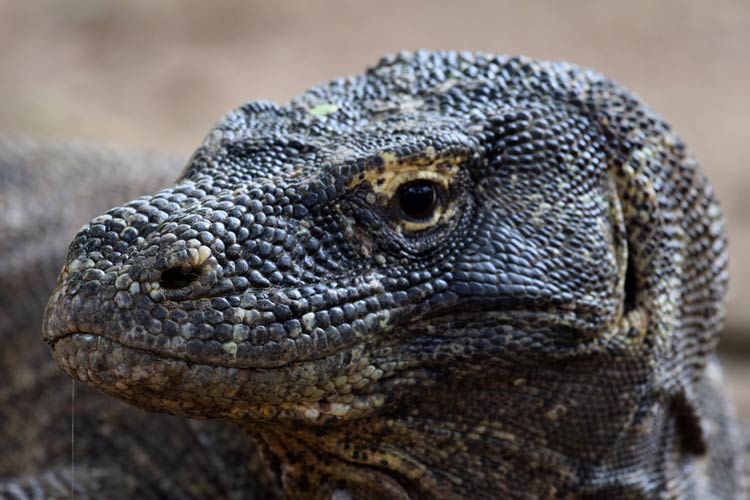
Komodo dragon (Varanus komodoensis)
Characteristics
The Komodo dragon (Varanus komodoensis) is a large species of lizard that is native to the Indonesian islands of Komodo, Flores, Rinca, and Gili Motang. It is the largest species of lizard in the world, and can grow up to 3 meters in length and weigh up to 140 kg. Some of its notable characteristics include:
- Physical appearance
The Komodo dragon has a large and stocky body, with powerful legs and a strong tail that it uses for balance and defense. Its skin is rough and covered in scales, and its color varies from grey to brown, depending on its habitat and age. - Carnivorous
The Komodo dragon is a carnivore and feeds on a wide variety of prey, including deer, boar, monkeys, and smaller reptiles. It has powerful jaws and sharp teeth that it uses to tear apart its prey. - Venomous saliva
The Komodo dragon’s saliva contains a potent mixture of toxic bacteria and enzymes, which it uses to incapacitate its prey. When it bites its prey, the saliva enters the bloodstream and causes a range of symptoms, including sepsis, blood poisoning, and death. - Excellent sense of smell
The Komodo dragon has a keen sense of smell, which it uses to locate its prey from great distances. It has a highly sensitive tongue that it uses to detect odors in the air, and it can follow a scent trail for several kilometers to find its next meal. - Solitary behavior
The Komodo dragon is a solitary creature and is generally only seen in groups when feeding on a large carcase or during the breeding season. It is a territorial animal, and will defend its territory against other dragons and any other potential threats.
These are some of the notable characteristics of the Komodo dragon, a unique and fascinating species that is found only in the Indonesian islands of Komodo, Flores, Rinca, and Gili Motang.
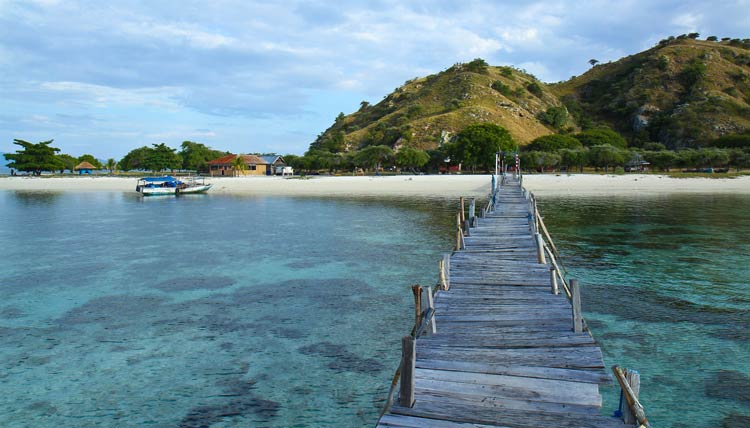
Tourism and tourist main attractions in the park
Komodo National Park is a popular tourist destination and attracts visitors from around the world. The main attractions for tourists in the park include:
- Komodo dragons
The park is named after its flagship species, the Komodo dragon, and is one of the few places in the world where visitors can see these fascinating creatures in their natural habitat. Guided tours are available to observe the dragons and learn about their behavior and biology. - Snorkeling and diving
The park’s coral reef system is home to a rich and diverse marine life, and offers some of the best snorkeling and diving opportunities in the world. Visitors can explore the colorful coral gardens and encounter a wide variety of marine life, including turtles, manta rays, and several species of sharks. - Hiking and trekking
The park’s forests, hills, and savannas offer a range of hiking and trekking opportunities, with several well-marked trails that lead to scenic overlooks, waterfalls, and other natural wonders. - Bird watching
The park is home to a wide variety of bird species, including species of parrots, pigeons, and eagles, and is a popular destination for bird-watching enthusiasts. - Cultural experiences
The park’s surrounding communities offer a range of cultural experiences, including visits to traditional villages, cultural performances, and opportunities to learn about the local way of life.
These are some of the main attractions for tourists visiting Komodo National Park, which offers a unique and unforgettable experience for nature and wildlife enthusiasts, adventure seekers, and culture lovers.
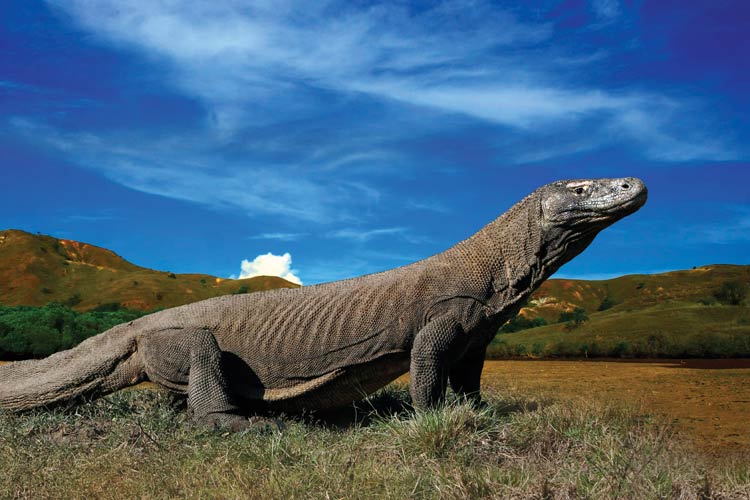
How To Reach To Komodo National Park
There are several ways to reach Komodo National Park, depending on where you are coming from. Here are some common ways to get there:
- By Air
The nearest airports to Komodo National Park are Labuan Bajo Airport on Flores Island and Komodo Airport on Komodo Island. Both airports have daily flights from major cities in Indonesia, such as Jakarta and Bali. - By Sea
Komodo National Park can also be accessed by boat from several ports in Indonesia, including Bali, Lombok, and Labuan Bajo. Boat tours are a popular way to explore the park, and visitors can choose from a range of options, from budget to luxury. - By Land and Sea
For those who want to combine a road trip with a boat tour, it is possible to drive from Bali to Labuan Bajo, and then take a boat to Komodo National Park. The journey takes around two days and involves driving through the scenic landscapes of Bali and Flores.
Once you arrive at Komodo National Park, you can explore the park’s islands and marine environment by joining guided tours, renting a boat or kayak, or hiking through the park’s trails.

Best Time To Visit Komodo National Park
The best time to visit Komodo National Park is during the dry season, which runs from April to December. During this time, the weather is generally dry and sunny, with less rainfall and lower humidity. The seas are also calmer, making it easier to navigate the park’s waters and go snorkeling or diving.
In contrast, the wet season, which runs from January to March, can bring heavy rains, rough seas, and strong winds, which may affect your travel plans and activities in the park. Moreover, during the wet season, some of the islands’ trails may be slippery or inaccessible due to the rainfall, which can make it difficult to explore the park’s natural beauty.
Therefore, it is recommended to visit Komodo National Park during the dry season for a more comfortable and enjoyable experience.
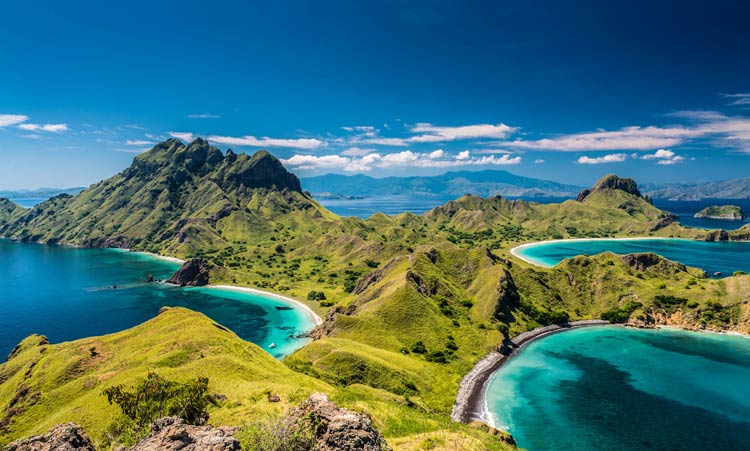
Komodo National Park in Numbers
- 3 major islands: Komodo, Rinca, and Padar
- 26 smaller islands
- 1,817 km² total surface area (land and marine)
- Proposed extensions would bring the total surface area up to 2,321 km²
- 1,073 km² of marine protected area
- 603 km² of terrestrial protected area
- Over 5,000 Komodo dragons in the park
- 1,000+ species of fish
- 260 species of reef-building coral
- 70 species of sponges
- 14 species of whales and dolphins
- 5 species of sea turtles
- 1 species of dugong (sea cow)
- Over 50 dive sites
- 20+ dive centers
- 1,000+ visitors per day during peak season (July and August)
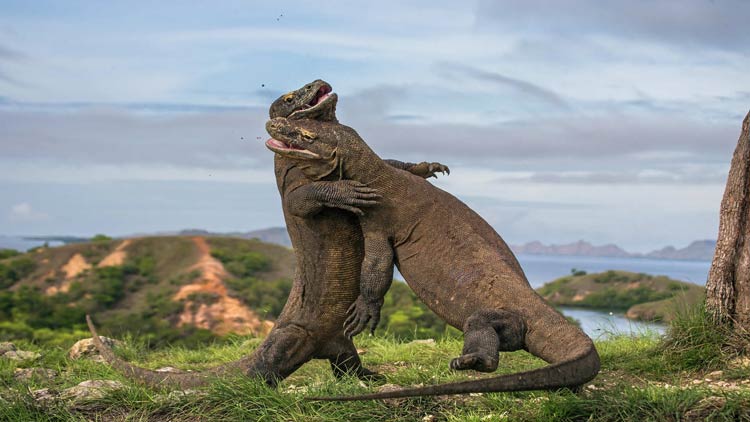
Conservation
Komodo National Park is an important conservation area, and several measures have been taken to protect its unique ecosystem and wildlife. Some of the key conservation initiatives in the park include:
- Protection of the Komodo dragon
The park was established in 1980 primarily to protect the Komodo dragon and its habitat, and measures have been taken to ensure the survival of this species, including habitat protection and monitoring of populations. - Marine conservation
The park’s coral reefs and marine life are also protected, with measures in place to manage and regulate tourism activities, fishing, and other human activities that may impact the marine ecosystem. - Habitat protection
The park’s forests, hills, and savannas are protected, and measures have been taken to prevent deforestation, illegal logging, and other forms of habitat degradation. - Community involvement
The park’s surrounding communities play an important role in conservation efforts, and programs have been established to involve local people in the management and protection of the park’s resources. - Research and monitoring
Ongoing research and monitoring programs are in place to better understand the park’s ecosystems and wildlife, and to identify and address any potential threats to their survival.
These are some of the key conservation initiatives in Komodo National Park. They play an important role in preserving Indonesia’s unique biodiversity and protecting the species and habitats that call this region home.

Interesting facts about Komodo National Park
- Home to the largest lizard
The Komodo dragon, the largest species of lizard in the world, is found only in the park and a few surrounding islands. - Marine biodiversity
The park’s coral reefs are home to an incredible variety of marine life, with over 1,000 species of fish and hundreds of species of coral identified. - UNESCO World Heritage Site
Komodo National Park was designated a UNESCO World Heritage Site in 1991, in recognition of its unique natural beauty and biodiversity. - Active volcanoes
The park is located on the rim of the Pacific Ring of Fire, and several active volcanoes are located within its boundaries. - Sunken boats
The park’s waters are also home to several sunken boats, including World War II wrecks, which provide a unique diving experience and habitat for marine life. - Pink Beach
The park’s famous Pink Beach is one of only seven in the world, and gets its unique color from the crushed red corals mixed with the white sand. - Rich cultural heritage
The park’s surrounding communities have a rich cultural heritage, and traditional fishing, weaving, and pottery techniques are still practiced today.
These are just a few of the interesting facts about Komodo National Park, which offers a unique and diverse experience for visitors and is considered one of the world’s most valuable natural and cultural heritage sites.
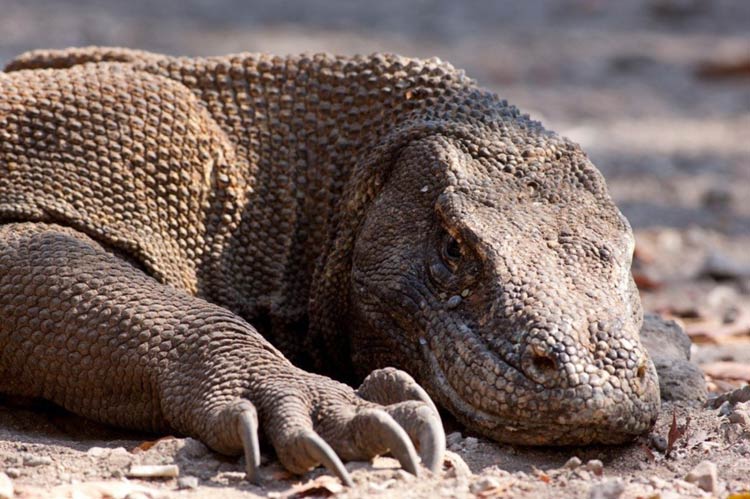
Q&A (questions and answers) about Komodo National Park
Q: What is Komodo National Park?
A: Komodo National Park is a protected area in Indonesia that encompasses the three larger islands of Komodo, Rinca, and Padar, as well as several smaller islands. It is best known for being the home of the Komodo dragon, the largest species of lizard in the world.
Q: Where is Komodo National Park located?
A: Komodo National Park is located in the Nusa Tenggara region of Indonesia, between the islands of Sumbawa and Flores.
Q: What is the main attraction of Komodo National Park?
A: The main attraction of Komodo National Park is the Komodo dragon, a species of large monitor lizard that is found only in the park and a few surrounding islands.
Q: What else can visitors expect to see in the park?
A: Visitors to the park can also expect to see an incredible variety of marine life, including colorful coral reefs, over 1,000 species of fish, and several sunken ships, as well as diverse landscapes, including hills, forests, and savannas.
Q: Is Komodo National Park a UNESCO World Heritage Site?
A: Yes, Komodo National Park was designated a UNESCO World Heritage Site in 1991, in recognition of its unique natural beauty and biodiversity.
Q: What kind of conservation efforts are in place in the park?
A: Conservation efforts in Komodo National Park include habitat protection, marine conservation, community involvement, research and monitoring, and protection of the Komodo dragon. These efforts aim to protect the park’s unique ecosystem and wildlife, and to ensure their survival for future generations.


